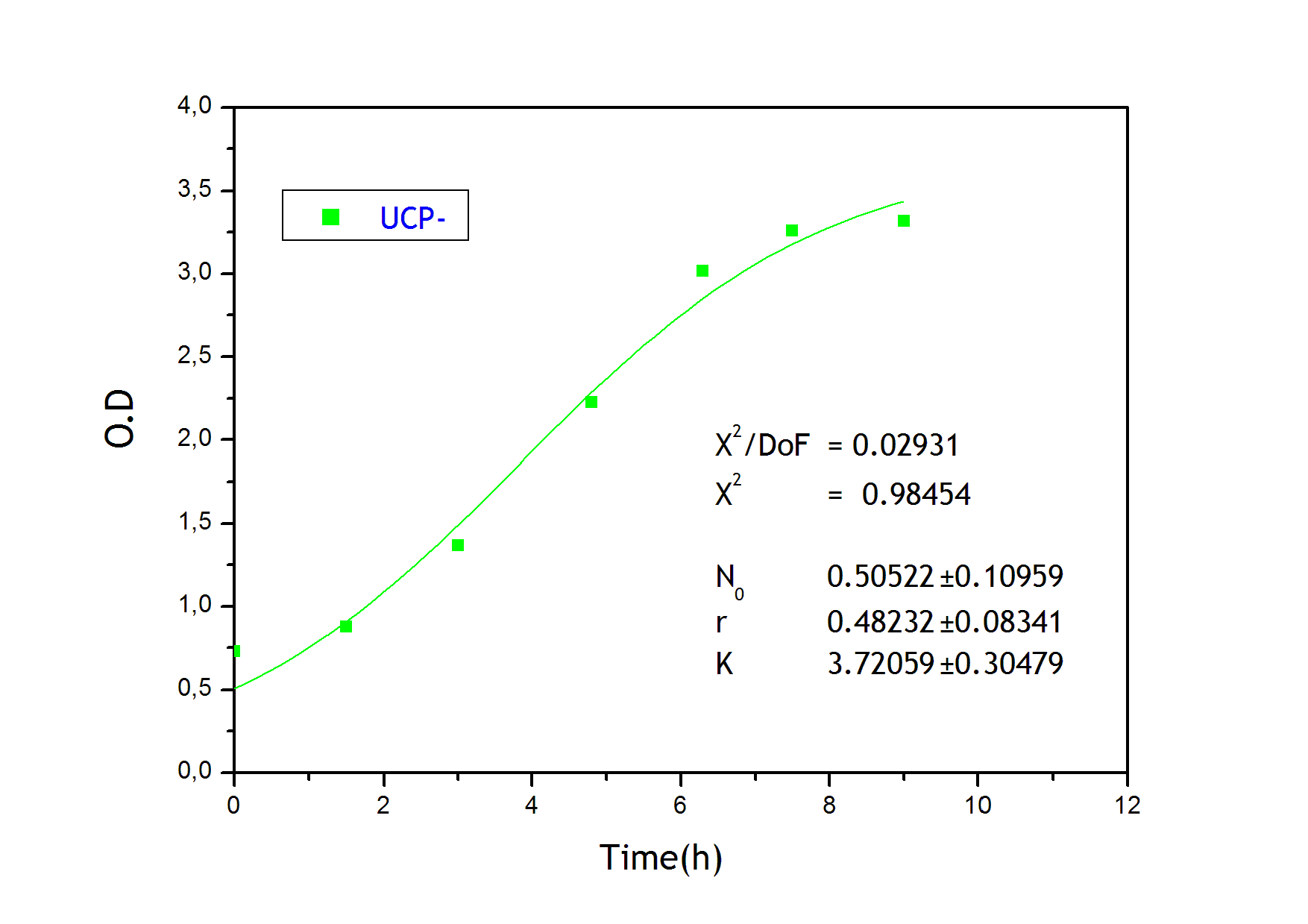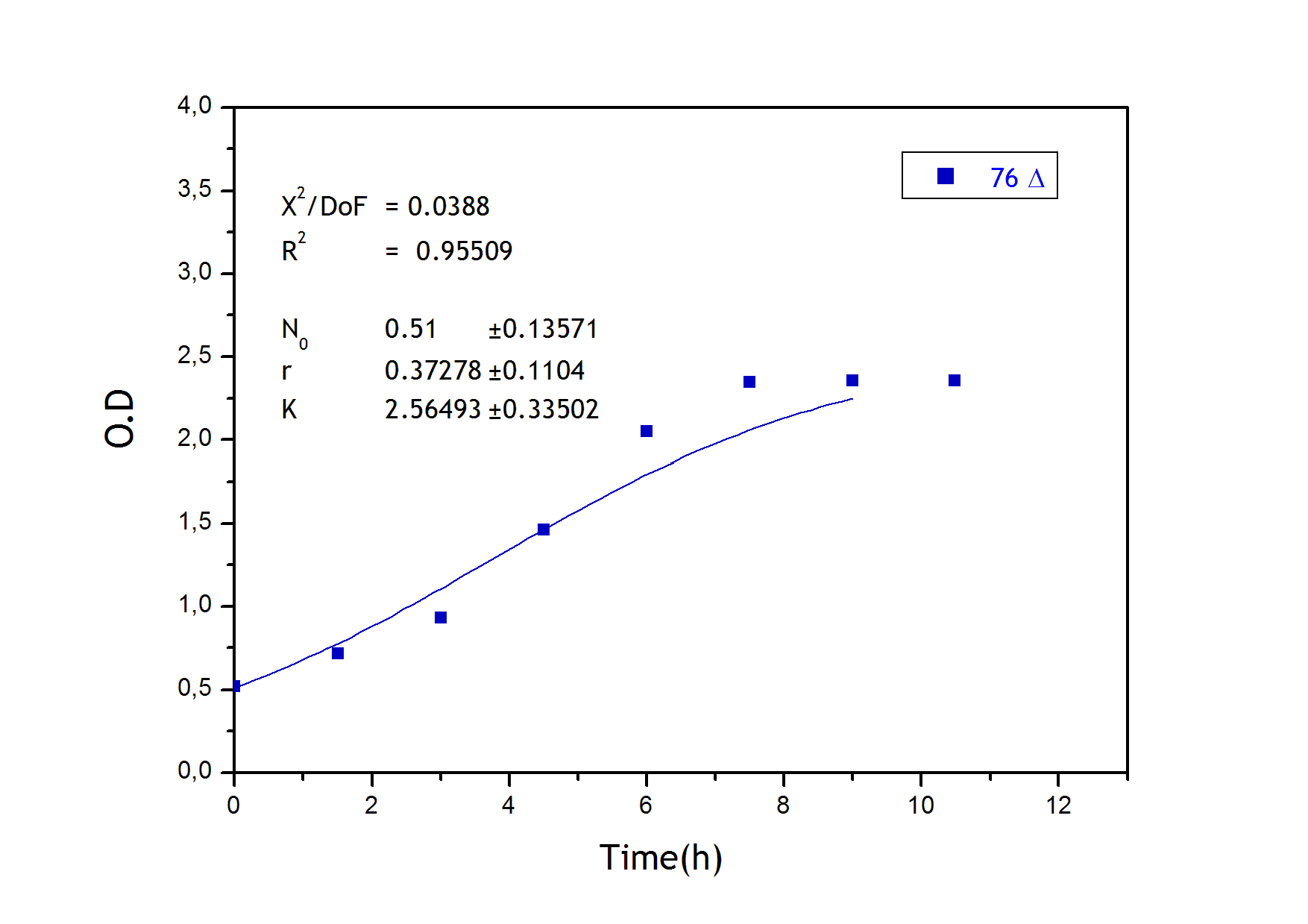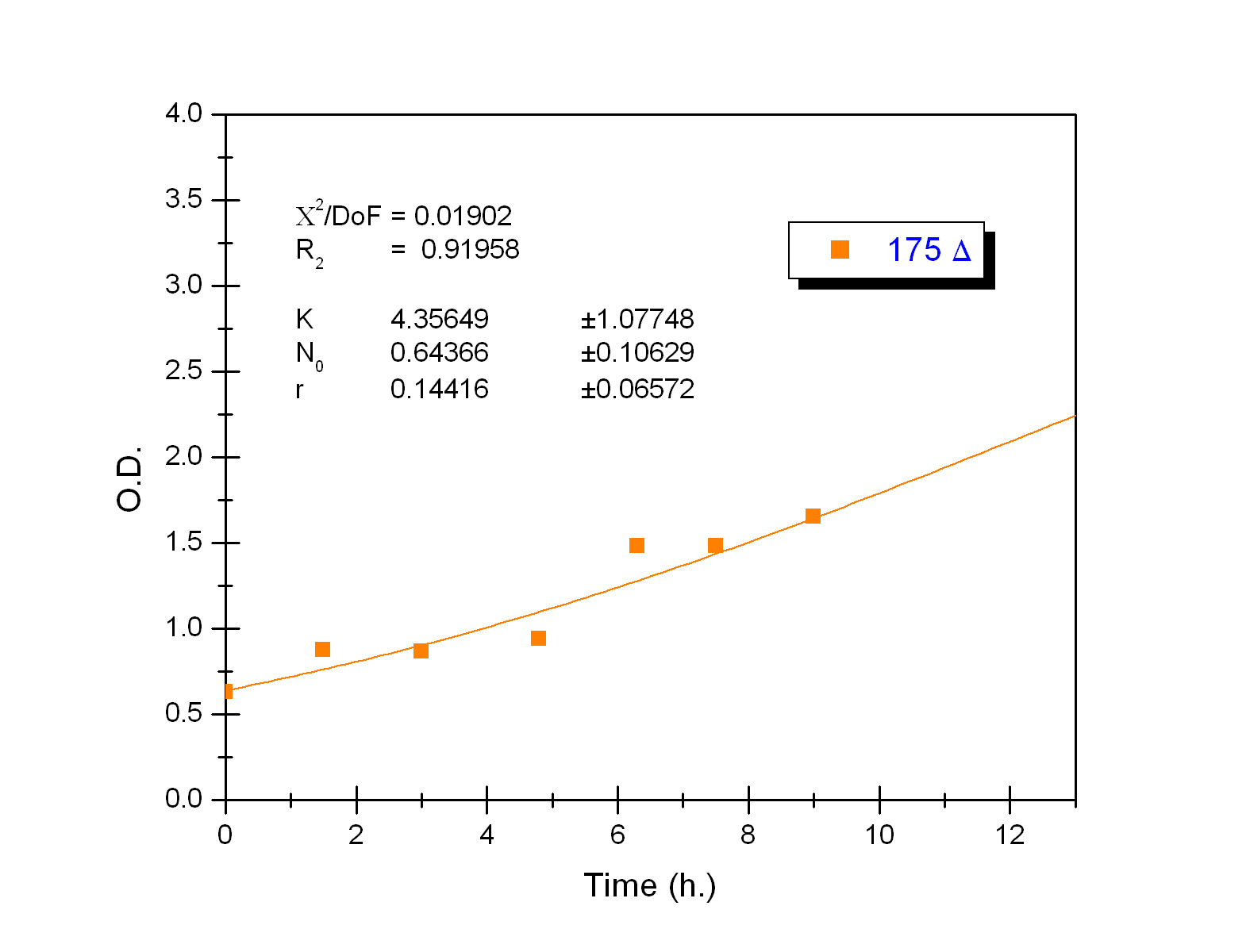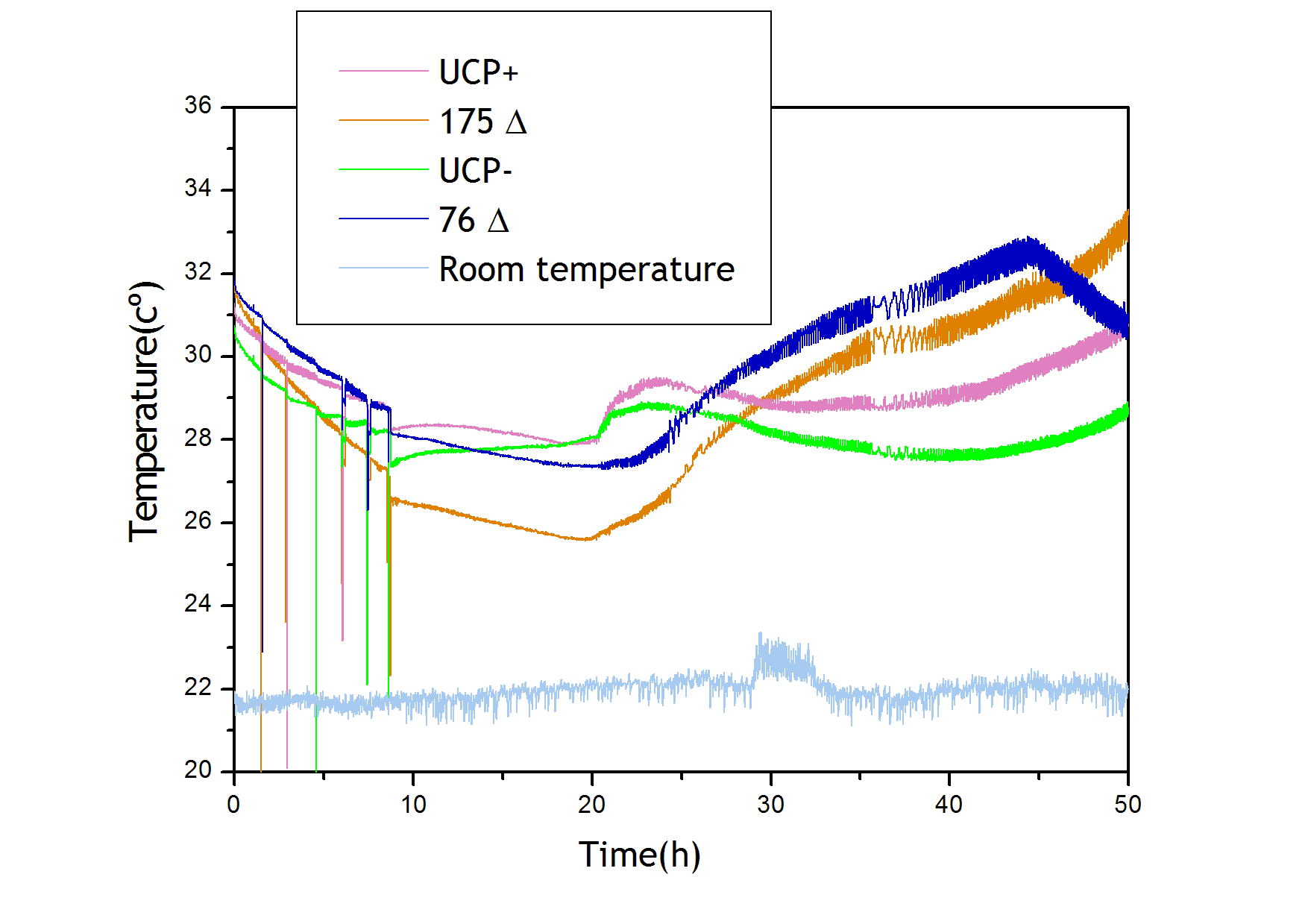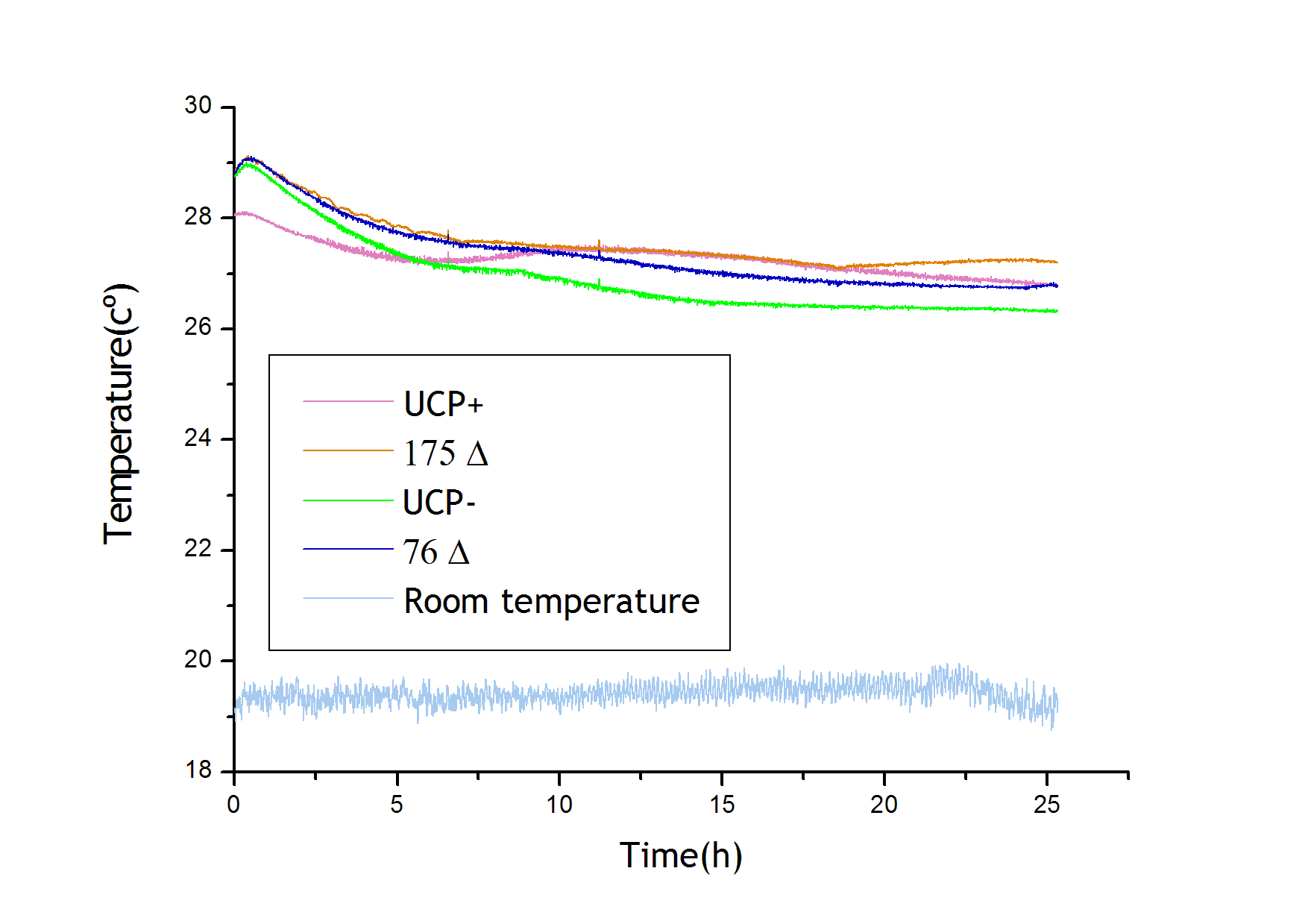Team:Valencia/Project/Lab work/2 experiments
From 2008.igem.org
| Line 37: | Line 37: | ||
<h3> Strains growth </h3> | <h3> Strains growth </h3> | ||
| - | + | Besides monitoring temperature evolution, we also compared the growth of the cultures. For this purpose, we measured O.D. of the cultures. O.D. was measured every ninety minutes for a nine hours period. We carried out this experiment both under normal culture conditions ( Erlenmeyer flasks shaken at 30ºC ) and in our thermally isolated LCCs. | |
| - | This | + | |
| + | This measurement was useful in order to determine the [[Team:Valencia/Project/Modeling#Black box model of temperature increase produced by thermogenin | growing parameters used in the modeling]] of our system. Culture growth characterization through O.D. indirectly confirmed the expression and functional activity of UCP1. As expected, mutant strains (Gly175Δ and Gly76Δ) exhibited a delayed growth kinetics indicating that uncoupling activity was present. UCP- and UCP+ grew faster.The former does not produce functional thermogenine whereas the later is not functional in absence of fatty acids. These results, confirming the expression of active thermogenine, suggested that we might succeed in our approach and we thus went on with our temperature measurements until we found the optimal conditions. | ||
| + | |||
Strains growth equations: | Strains growth equations: | ||
Revision as of 19:17, 28 October 2008
2.-Demonstration that thermogenin-expressing yeast strains can heat their own broth medium.
Materials
In our experiments we worked with the the following Saccharomyces cerevisiae strains kindly handed by Eduardo Rial :
- UCP+ : UCP1 gene with Gal7 promoter.
- UCP- : UCP1 antisense gene with Gal7 promoter. It is used as control strain.
- Gly175Δ : UCP1 mutant sequence, Glycine 175 has been deleted.
- Gly76Δ : UCP1 mutant sequence, Glycine 76 has been deleted. These two strains have increased uncoupling activity and do not need fatty acids to be functional.
We used plasmid pYeDP as our vector in Saccharomyces cerevisiae.
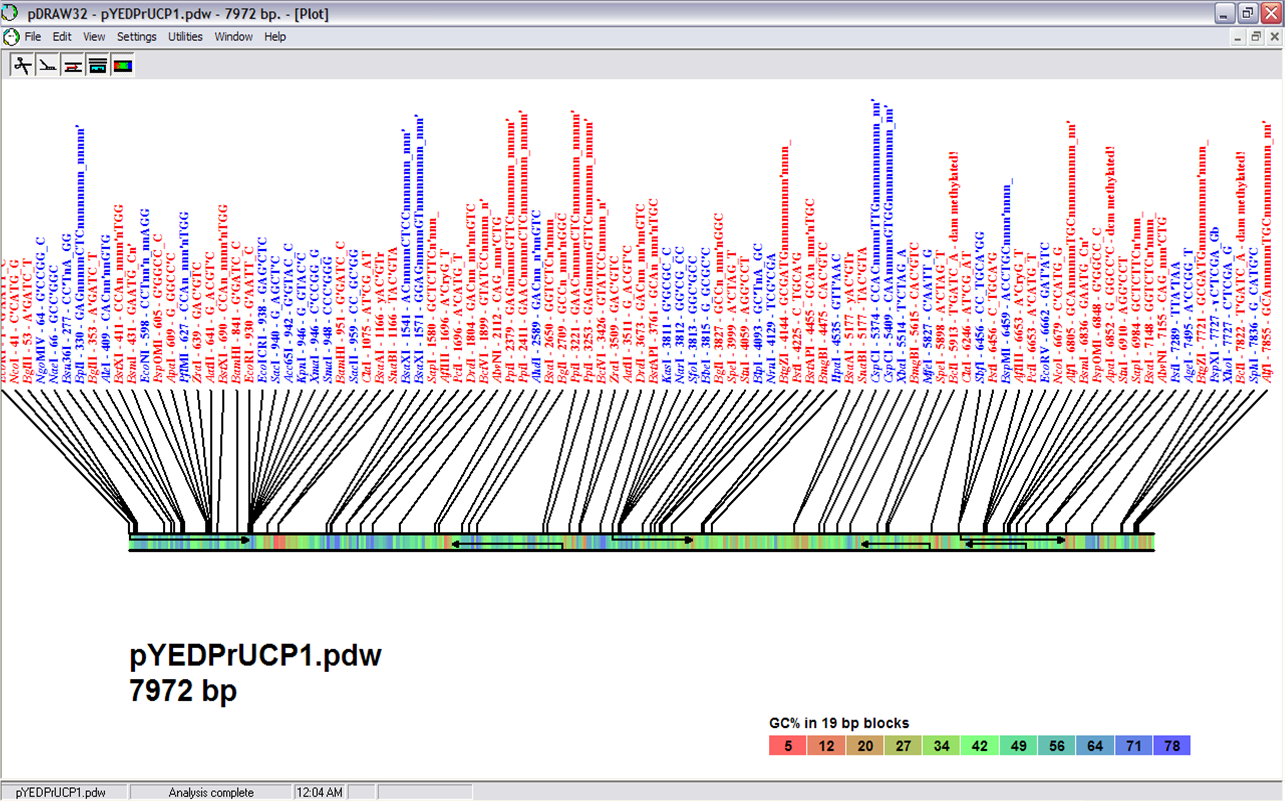
Method of culturing UCP1-producing yeast strains for heat production
Each of our experiments entails the following steps:
- We prepare a 30ml inoculum for each strains in 100ml Erlenmeyer flasks with SD medium. We leave it overnight in the 28ºC stove.
- We prepare a second inoculum for each strain, this time 100ml SP medium in 1L Erlenmeyer flasks. The initial O.D. of this second inoculum is adjusted to 0.2. We leave it several hours in the 28ºC stove.
The objective of this two-step protocol is to be able to start the experiment with a higher O.D. in a medium with little or no glucose. In summary: first, we grow our strains in a liquid medium with glucose (SD medium), in which they have a better growth rate. Second, we use SP medium because it has a really small amount of glucose.
- We start the experiment in the LCCs with a volume of 100ml of SP medium, adjusted to O.D. of 0.6. We heat the medium up to aproximately 28ºC inside the LCC.
- We add 1% galactose to each of the LCCs containing the four yeast strains. This sugar is the UCP1 gene Gal7 promoter inductor and it is therefore needed for the production of UCP1.
- We monitor the temperature evolution in the LCCs thanks to our LCC system.
Strains growth
Besides monitoring temperature evolution, we also compared the growth of the cultures. For this purpose, we measured O.D. of the cultures. O.D. was measured every ninety minutes for a nine hours period. We carried out this experiment both under normal culture conditions ( Erlenmeyer flasks shaken at 30ºC ) and in our thermally isolated LCCs.
This measurement was useful in order to determine the growing parameters used in the modeling of our system. Culture growth characterization through O.D. indirectly confirmed the expression and functional activity of UCP1. As expected, mutant strains (Gly175Δ and Gly76Δ) exhibited a delayed growth kinetics indicating that uncoupling activity was present. UCP- and UCP+ grew faster.The former does not produce functional thermogenine whereas the later is not functional in absence of fatty acids. These results, confirming the expression of active thermogenine, suggested that we might succeed in our approach and we thus went on with our temperature measurements until we found the optimal conditions.
Strains growth equations:
Experiment results
Troubleshooting
In order to establish the final conditions and protocol, we have gone trough a lot of different experiments.
- Low shaking speed, large volume and low initial O.D.
- We did not obtain any encouraging results.
- Besides, we obtained weird oscillations in most of our experiments (as described in the LCC troubleshooting).
At the beginning this were the conditions for our experiment. However,we did not want to add the inductor at such lower O.D., so we used to wait three hours of experiment before induction.
- Medium variations
- YPKAc Medium : In this medium containing acetate, yeast is suppose to only breath rather than fermenting. We try it in case the problem was that electron transport chain was inhibited.
- Palmitate: although our Gly175Δ and Gly76Δ mutants do not need this compound, we tried and added it in case it made any difference for UCP+ strain. We tried and added it to both SP medium and YPKAc medium.
- We did not obtain any encouraging results either.
As we were obtaining any results we desperately tried other mediums.
- Increased shaking speed and reduced volume
- We obtained temperature increase temperature increase for the first time.
- We were not able to reproduce it.
- Besides, the weird oscillations observed before disappeared.
In other to allow proper respiration the yeast culture in the LCCs, we tried and increase the revolutions per minute of of shaker. Besides, we reduced the volume for the yeast culture to have more oxygen available.
- Higher O.D.
- In order to do that, we design the two inoculum protocol described above. With this protocol, we intend to reach an elevated O.D. without having a medium with too much glucose. We added a SP medium inoculum so as to avoid adding too much SD medium (glucose rich) to the LCC.
- We obtained temperature increase and we were able to reproduce it.
- We tried and begin the experiment with an even higher O.D. but we have not obtained the encouraging results in yet.
Instead of starting the experiment at a lower O.D. and waiting several hours before inducing, we thought it would be better to start at a higher O.D. Besides, we would make sure that the O.D. at the time of induction was the same for the four strains.
- Initial temperature
- We put a lot more effort in starting at the same temperature every time.
- Nevertheless, this temperature inside the calorimeter depends on the room temperature. And room temperature can significantly change depending on the outside temperature.
Even after obtaining results that shown mutants increased culture temperature, we obtained obtained weird results were none of the strains behaved as wished. We realized those experiments where the initial temperature of the culture was higher correspond to those were we obtained weird results.
Here you can see a summary of our experiments and the different conditions for them.
|
|
|
|
|
|
|
|
|
|
|
|
|
|
|
|
|
|
|
|
|
 "
"
